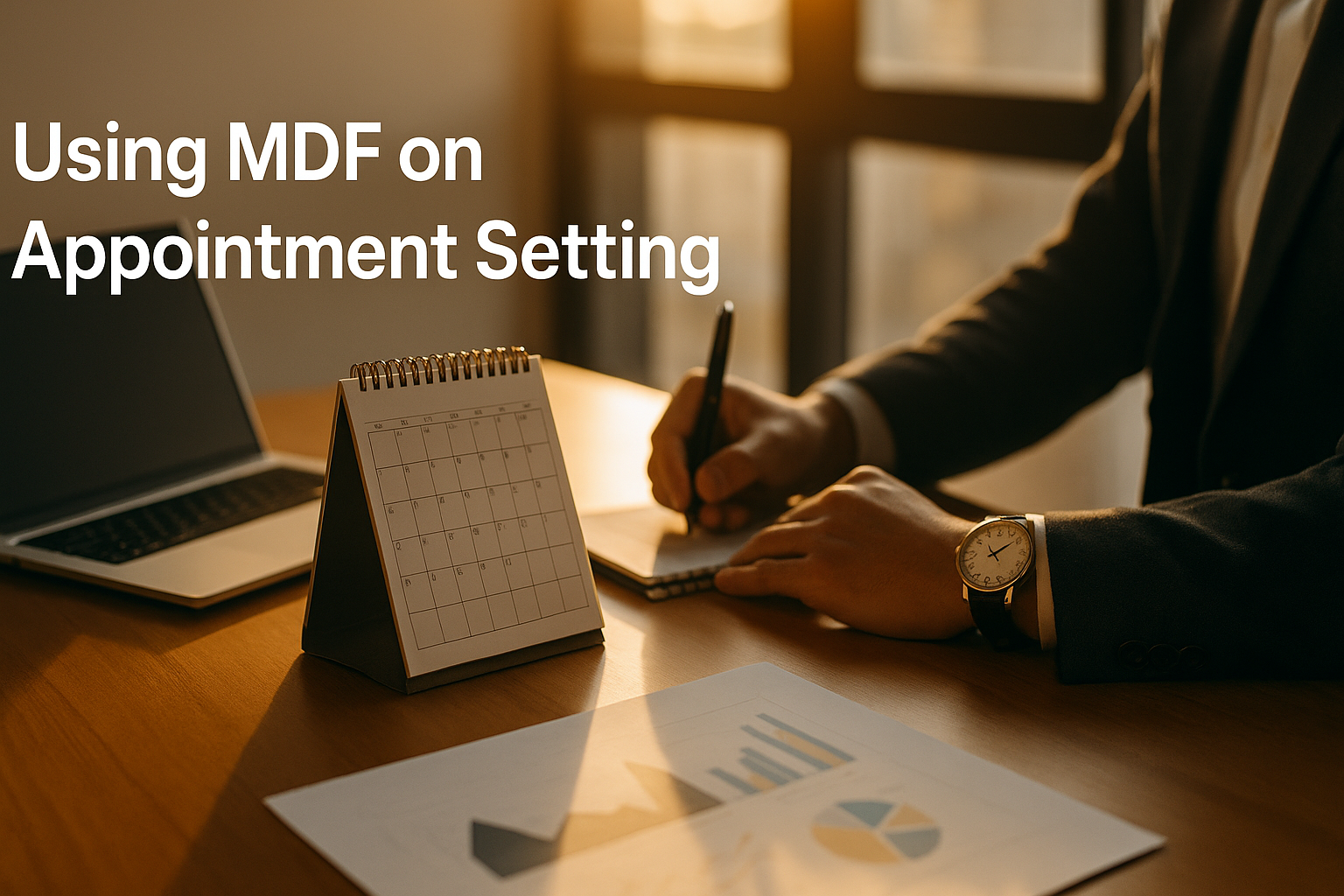How Site Ascend Uses ANUM to Confirm Buying Readiness Before Booking Executive Meetings
Demand Generation
Learn how to leverage Marketing Development Funds (MDF) to enhance your appointment setting strategies. Discover tips and best practices to maximize your investment and drive meaningful business growth.
-
B2B Channel Marketing Strategies

Introduction
In the fast-paced world of B2B channel marketing, achieving optimal results from Market Development Funds (MDF) is a priority for many companies. These funds, provided by vendors to their channel partners, are critical for driving sales and marketing activities that contribute to long-term business growth. One of the most impactful ways to leverage MDF is in appointment setting, a pivotal step in the B2B sales funnel. In this blog, we'll explore how to use MDF effectively to optimize appointment setting and increase your ROI.
What MDF Means for Demand Generation Marketers
Market Development Funds (MDF) are typically allocated by vendors to channel partners to support various marketing activities. These activities could range from targeted advertising campaigns to hosting events. When strategically used for appointment setting, MDF becomes an invaluable asset to demand generation marketers in technology companies. Appointment setting is crucial to qualifying prospects and generating high-quality leads—activities that ultimately drive sales and revenue.
For demand generation marketers, the challenge lies in efficiently utilizing MDF to maximize its impact on appointment setting. It's not just about having funds available—it's about deploying them in ways that align with business goals and deliver measurable results. This is where strategic planning, data analysis, and proper management of MDF come into play.
Common Challenges Marketers Face
While MDF offers great potential, the execution can be tricky. Demand generation marketers often encounter several hurdles when attempting to integrate MDF into appointment setting. Some of the common challenges include:
These challenges can impede the effectiveness of appointment setting campaigns, limiting the full potential of MDF. However, by recognizing these obstacles, demand generation marketers can take proactive steps to address them and drive better results.



.png)



.png)
%201.png)


.png)
%201.png)


.png)








Solutions That Work
Site Ascend's services, including B2B appointment setting, channel marketing, event marketing, and lead qualification, are specifically designed to help technology companies overcome these challenges. Here's how:
By integrating these services, Site Ascend helps marketing teams enhance their appointment setting strategies, resulting in increased sales opportunities and improved long-term success.
Actionable Steps for Marketers
To leverage MDF effectively for appointment setting, demand generation marketers can take the following steps:
By following these steps, marketers can take full advantage of MDF and achieve greater success in appointment setting.
Comparison of Market Solutions
When considering solutions for appointment setting, many companies face the decision of whether to handle this in-house or outsource to specialized providers. While in-house teams may seem like a cost-effective option, they often lack the dedicated expertise, scalability, and focus that external providers offer.
Outsourcing to experts like Site Ascend provides distinct advantages:
These differentiators make Site Ascend the ideal partner for businesses looking to maximize their MDF and appointment setting outcomes.
Conclusion
Maximizing the effectiveness of Market Development Funds in B2B appointment setting is crucial for driving revenue and optimizing sales efforts. By strategically leveraging MDF and partnering with Site Ascend, demand generation marketers can streamline appointment setting, overcome common challenges, and achieve greater results.
Ready to improve your appointment setting outcomes? Contact us to learn how our services can help you maximize MDF and drive high-quality sales opportunities through targeted appointment setting.
How can I measure the ROI of MDF-funded appointment setting?
Measure ROI by tracking key metrics such as the number of appointments set, conversion rates, and average deal size. Analyzing these will help assess the effectiveness of MDF investment.
How do I ensure my channel partners are using MDF effectively?
Provide clear guidelines for MDF usage, offer training on best practices for appointment setting, and maintain regular communication to ensure alignment with sales and marketing goals.
What are the best practices for allocating MDF to appointment setting?
Focus on targeted lead generation, collaborate closely with channel partners, set measurable goals, and track results to refine your strategy. This approach maximizes the potential of MDF for appointment setting.



Start your pilot campaign today and explore the full range of Site Ascend's demand generation capabilities. Experience firsthand how we can enhance your efficiency, streamline your processes, and drive growth.